9. Linear Regression
1/42
There's no tags or description
Looks like no tags are added yet.
Name | Mastery | Learn | Test | Matching | Spaced |
|---|
No study sessions yet.
43 Terms
Other Names for Response Variable
Dependent Variable
Target Variable
Output Variable
Other Names for Explanatory Variable
Regressor
Independent Variable
Predictor Variable
Input Variable
Covariate
Simple Linear Regression Relationship
\beta0 is the Y-intercept and \beta1 is the slope of the line.
\varepsilon is the error, a random variable with constant variance. ( For population)

Assumptions for Linear Regression
Data were obtained by randomization
Relationship between X and Y is linear (Scatter Plot)
\varepsilon must be normally distributed with mean of 0 and constant variance
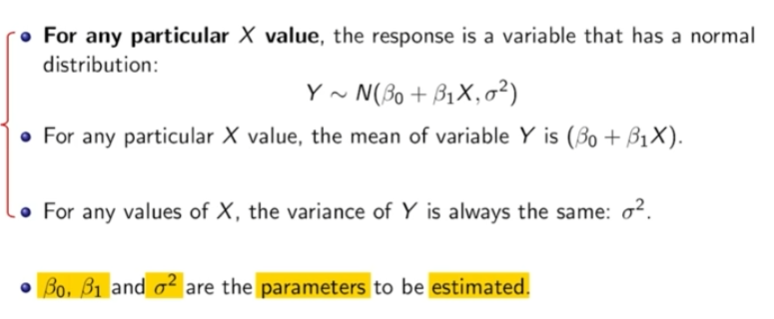
Error of the linear regression
stays constsant for any values of X
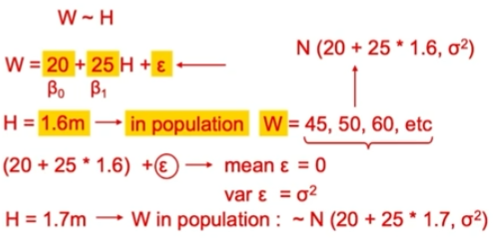
Ordinary Least Square Estimation
Square the difference between the actual and predicted response variable and compute the sum of them.
R Linear Model
lm = linear model
Response Variable: Selling_Price
Predictor Variable: Present_Price
\beta0 = 0.72, \beta1 = 0.52
y (hat) = 0.72 + 0.52x
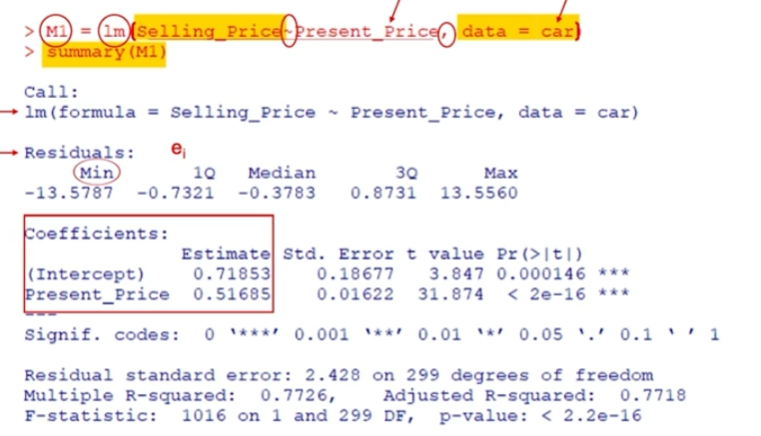
Point Estimation in R

Interpolation
Estimating the mean response for an X value that had not been observed, but is within the ranged of observed values
Extrapolation
Estimating the mean response for an X value that is not within the range of observed values
We do not know the form of the relationship outside of our sample, so we shuold avoid
Point Estimate of Varariance

Interval Estimates
Point estimate +- margin of error (Quantile * SE of point estimate)
Quantile = t distribution, df = n-2
Interval Estimates in R for Coefficient
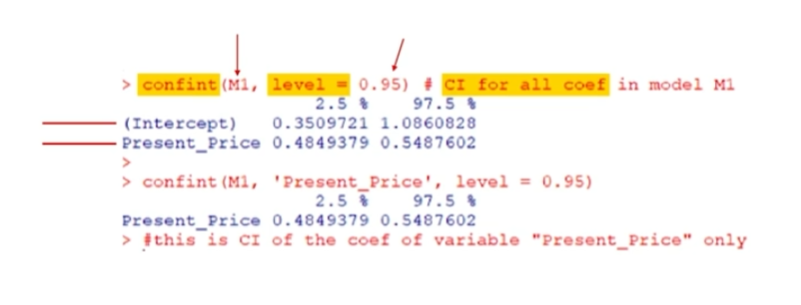
interval Estimates in R

T Test
Test significance of one regressor (coefficient) can also be the independent test for one regressor and the response variable
R Output T-Test
For a simple linear regression model, the T test is equivalent to F test
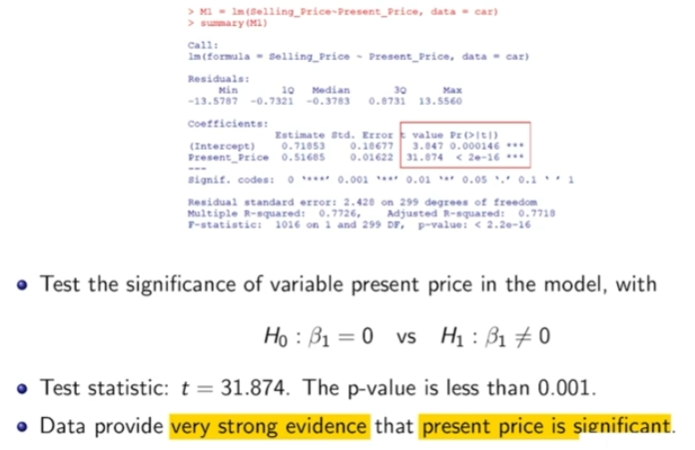
F Test
Test significance of the whole model
F Test Hypothesis
Null Hyphothesis: Model is not significant
Alternative Hypothesis: Model is significant
R Output F-Test
R formula for P distribution: pf(1016,1,299,lower.tail = F)
Df1 = No of Coefficents = 1
Df2 = n - No of Coefficent - 1
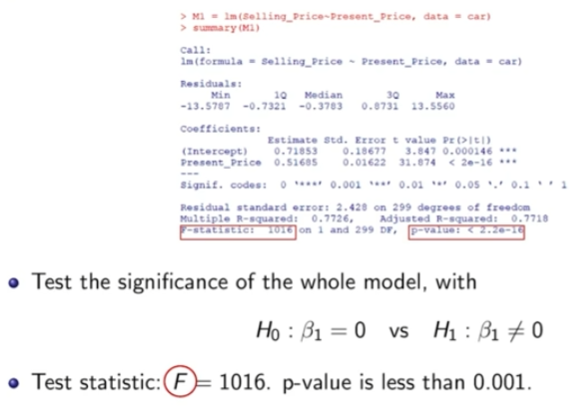
When F-Test is not significant
All regressors are not significant and we should use a intercept model
R code for intercept model
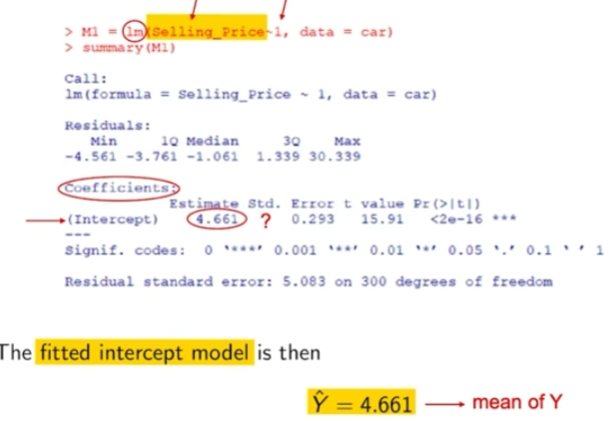
Regression Diagnostics
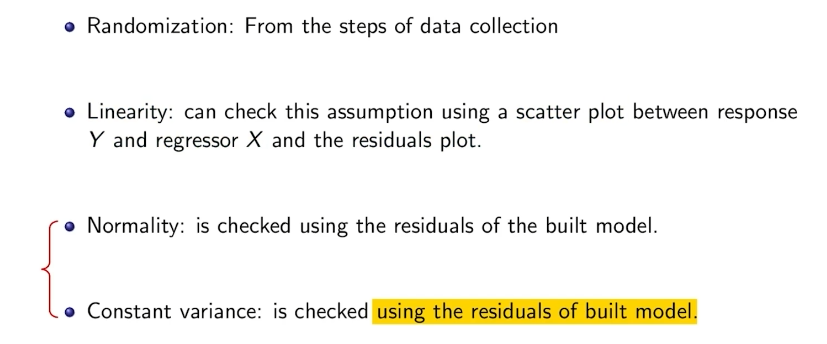
Checking Linearity and Variance
Use Scatter plot and draw top and bottom lines
Fix X via adding higher order element
Transform y by doing log(y) or 1/y
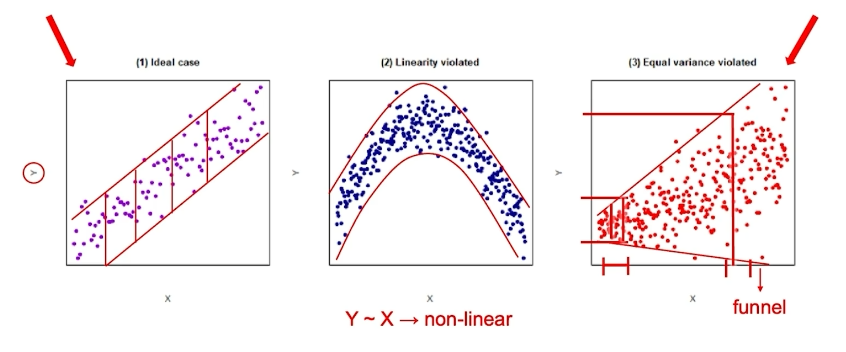
Residual Plots
Check the normality of the assumption
Check for non-constant variance and the need to transform Y
Check for the need to add higer order terms in X
Standardised Residuals
The distribution should follow a standard distribution since the residuals follows a normal distribution.

R output Residuals
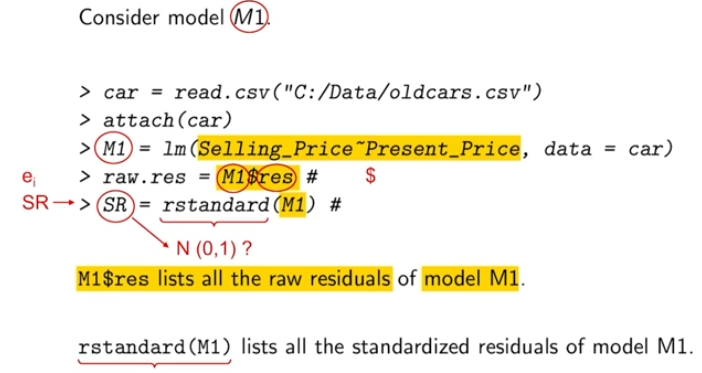
Checking Normality of Residuals
Creating a histogram plot or QQ-Plot of the Standardised Residuals and checking if they are in a standard distribution
Analysing Residual Plots
Plot SR against Y and X: Scattered around 0 within (3,-3)
Histogram and QQ plot of SR Normally Distirbuted
SR from fitted model are not independent but when sample size is large enough randomness should be seen
Common Issues in Residual Plots
Funnel in scatter plots
Curved band in X against Y
Non-normality in the QQ plot
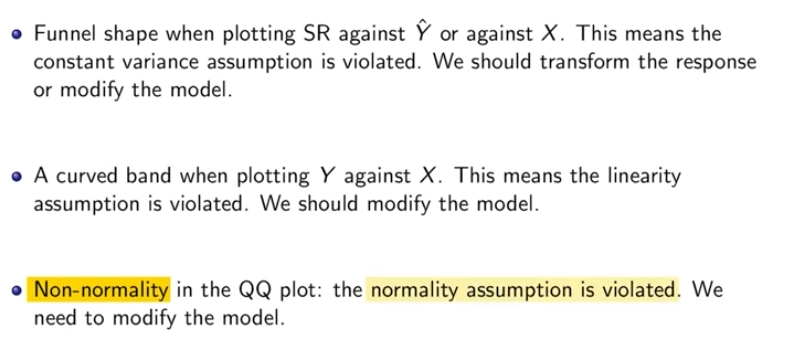
R Output
Model does not satisfy the constant assumption and the normality assumption
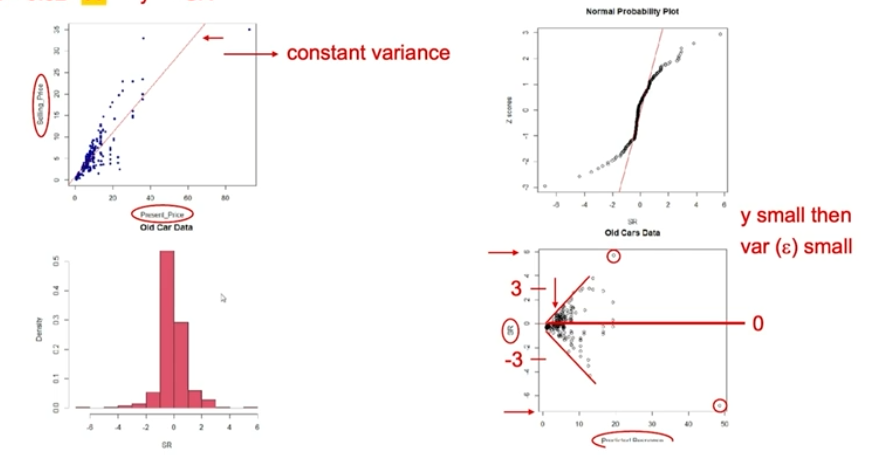
Outliers
Identified by the residuals
The standardised residuals greater than 3 or lesser than -3
Investigate outliers
Influential Point
A point that greatly affects the parameter’s estimate
Points with cooks distance > 1 is influential
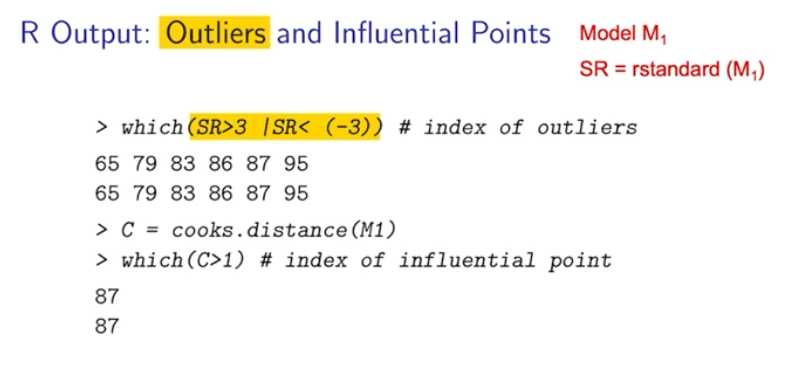
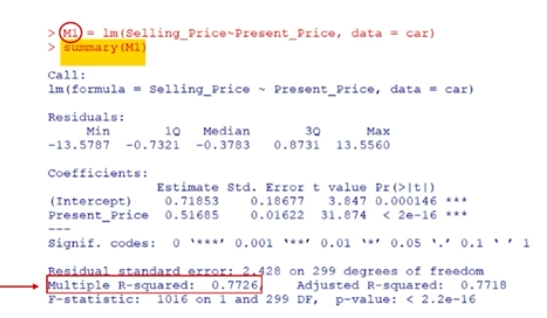
Coefficient of Determination R²
Check the goodness of fit of the model, between 0 and 1
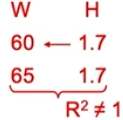
Simple Model Correlation
Equivalent to the square root of the coefficient of determination.
When correlation is negative, the equivalent relation is also negative.
R² weakness
The complexity of the model is not taken into consideration when explaining the goodness of fit of the model.
MLR vs SLR
Method of significant tests for categorical variable with more than 2 categories
Use adjusted R² to compare models
R Code for MLR
+ <Variable>
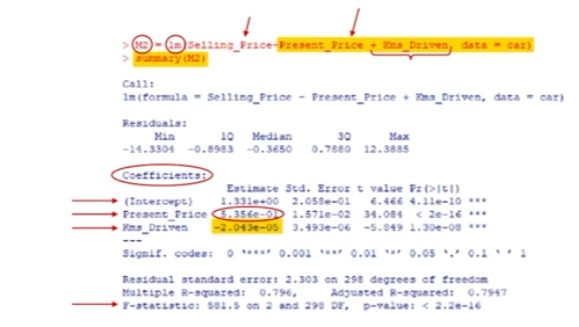
Adjusted R²
Takes into account the number of regressors included
K: number of regressors
n: number of samples
This enables us to compare the fit of 2 models with different number of variables

Indicator Variable
Changing categorical variables to integers
Variable vs Regressor
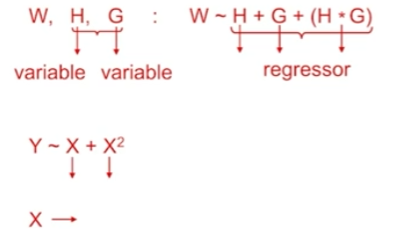
R output for Indicator Variables
X2 cant be removed as the interaction term of X1 and X2 is highly significant. To keep the interaction term, the main terms must be kept.
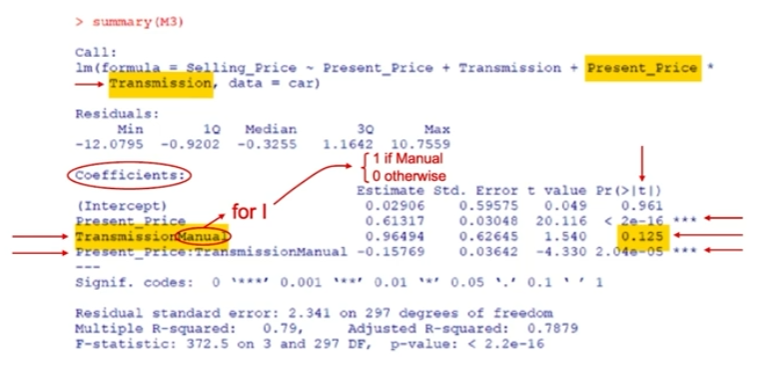
Checking Assumptions
Fitted model does not meet the assumptions
we can try to transform the variables or refit the model without the influential point
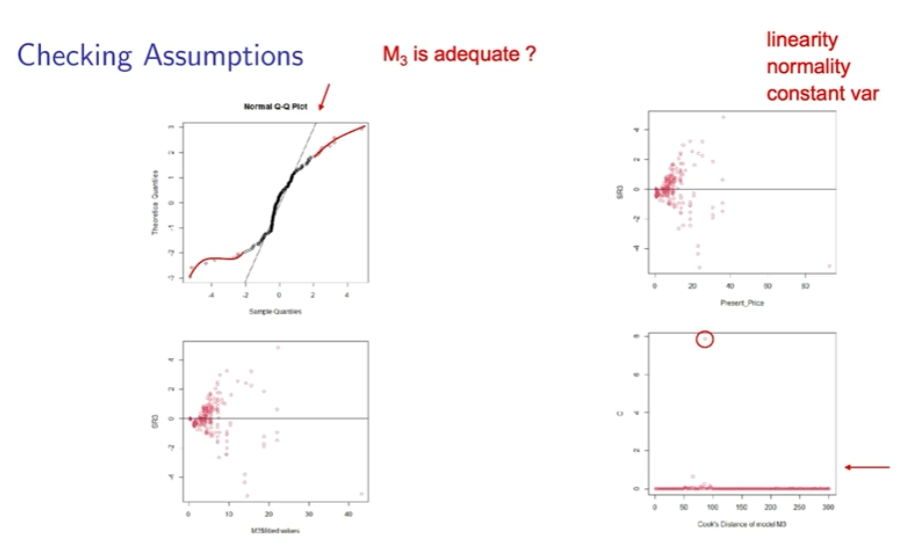
Need to Know
Test for significance of regressor
Fit a model in R and to write down a fitted regression
Check assumptions of a regression analysis unsing residual plots
Identity outliers and influential points
Interpret coefficients and R²
Compare the fit of models for the same reponse using R²